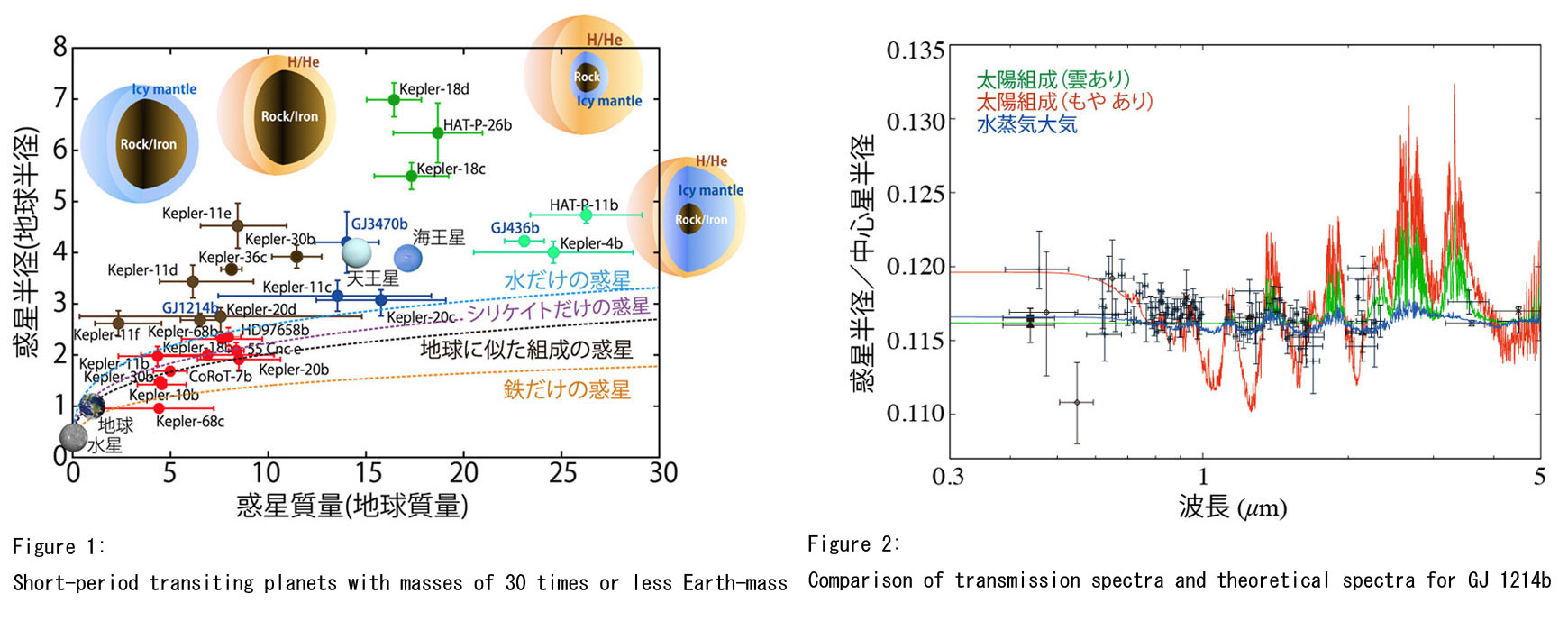Home > For Researchers > Public Research > Introduction of adoption public research ⑩
Introduction of adoption public research ⑩
Exploring Origins of Atmospheres and Interior Structures of Short-Period Super Earths around Low-Mass Stars
: Study on Their Formation Processes
Yasunori Hori (University of California, Santa Cruz / Division of Theoretical Astronomy, NAOJ)
Over 4,000 planetary candidates outside the solar system, i.e., exoplanets, have been discovered so far by the Kepler space telescope. Direct imaging surveys have also enabled us to find distant planets beyond several 10AUs such as HR 8799 systems. Exoplanet statistics suggested that close-in gas giants and distant planets are rare, whereas low-mass planets such as terrestrial planets and ice giants are common. As the next step, we are now starting to characterize exoplanets, e.g., their atmospheres, interior structures, surface environments, and habitability, in particular, low-mass planets with masses ranging from the Earth to Neptune (hereafter referred to as “Super-Earths”).
Recently, we have been revealing atmospheric compositions of short-period super-Earths, using large ground-based telescopes with 10m-sized apertures (the Subaru, Keck, and VLT), the HST and (Warm-)Spitzer space telescope (see Figure 1). Transmission spectroscopy in the atmosphere of a super-Earth during primary eclipse suggested that there are two possible atmospheric compositions for super-Earths (GJ 1214b, GJ 436b, and GJ 3470b orbiting M-dwarfs and HD 97658b and HAT-P-11b around K-dwarfs): 1) hydrogen-rich atmospheres with mineral clouds and/or hydrocarbon hazes in the upper layer below ~mbar and 2) (possibly, cloud-free) metal-rich atmospheres (see Figure 2). In the near future, the TESS project should increase the number of super-Earths that we can do follow-up observations for their characterization. And also, three 30m-class ground-based telescope projects (the GMT, TMT, E-ELT) and the ESA’s PLATO mission in 2020s are ongoing. Now is the time to investigate theoretically atmospheres and interior structures of low-mass planets just before observations get started.
In the next two or three years, advances in near-infrared radial-velocity measurements and photometric surveys are also expected to push ahead with the characterization of the atmospheres and interior structures of short-period super-Earths orbiting M-dwarfs (low-mass stars). Thus, in this study, we aim to reveal atmospheres and interior structures of super-Earths around low-mass stars in the context of formation processes. Short-period super-Earths are likely to have experienced two-body collisions in a way similar to a moon-forming giant impact. Such giant impacts compress the interior of a merged object and heat it up via a propagating shock wave. Not only mantle stripping and atmospheric loss occur but also dynamical mixing of material should be triggered by violent events. The former would determine the bulk composition of a planet and the latter would change the spatial distribution of material inside the planet which controls its subsequent thermal evolution. Therefore, we are planning to perform hydrodynamic simulations, i.e., Smoothed-Particle Hydrodynamics simulations (SPH), in order to examine mantle stripping and dynamical mixing of material due to giant impacts. In comparison with upcoming observational results of atmospheric spectroscopy, we aim to explore origins of super-Earths with atmospheres. In addition, M-dwarfs are fainter and colder than solar-type (FGK-type) stars. This means that a habitable zone in which a planet can retain liquid water on its surface is even closer than the current location of the Earth (1AU). Although the only habitable planet that we have ever known is the Earth, the improvement of our understanding for atmospheres and interior structures of short-period super-Earths around low-mass stars should be diagnostic of discussing the existence potentially-habitable planets outside the solar system.

